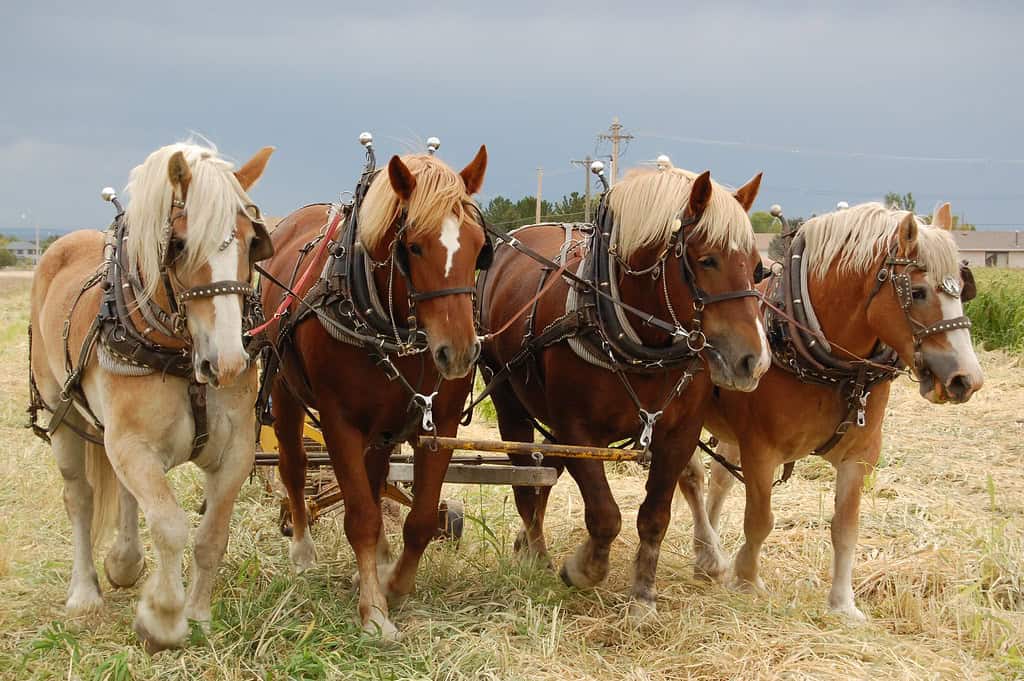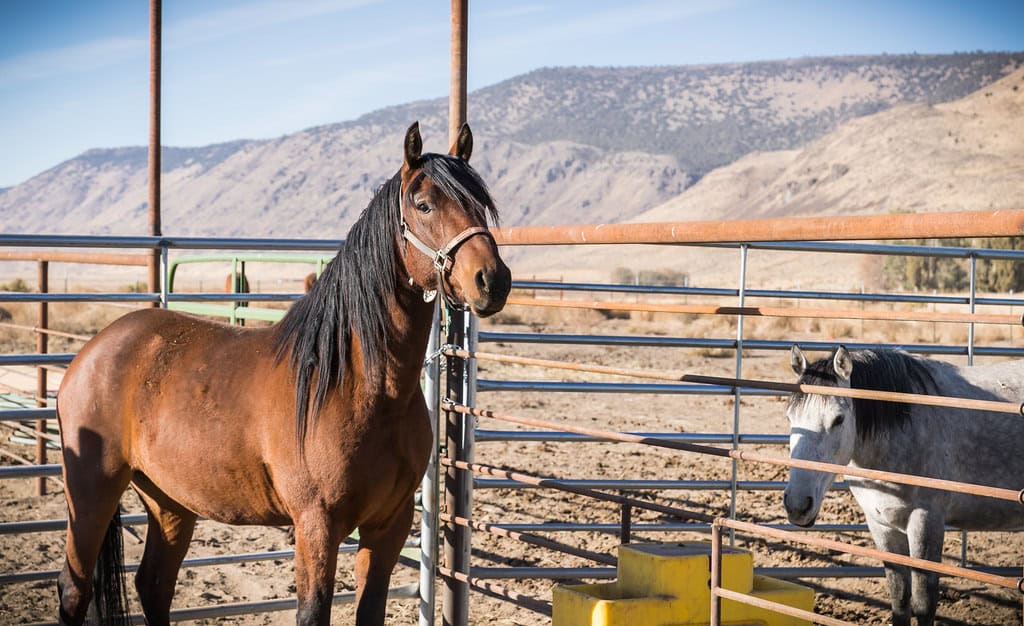The thundering of hooves across ancient battlefields, the gentle clip-clop down cobblestone streets, the quiet strength of a workhorse pulling a plow through rich earth. For thousands of years, horses have been our partners, our companions, and our lifeline to survival. These magnificent creatures didn’t just change how we moved through the world – they transformed civilization itself. From conquering empires to healing broken spirits, horses have woven themselves into the very fabric of human history. Their impact reaches far beyond what most people realize, touching everything from medicine to warfare, from agriculture to art. Let’s explore the incredible ways these noble animals have shaped our world and continue to enrich our lives today.
16. Transportation Revolution That Changed Everything

Before cars, trains, or planes existed, horses were the backbone of human transportation for over 4,000 years. They carried people across vast distances that would have taken weeks on foot, shrinking travel time from months to days. Think about it – without horses, ancient traders couldn’t have established the Silk Road, explorers wouldn’t have mapped new territories, and families would have remained isolated in small communities forever. The horse literally expanded the world for our ancestors. Even today, in remote mountainous regions and developing countries, horses remain essential transportation, proving their enduring value in connecting people across challenging terrain.
15. Military Dominance and Empire Building

Cavalry units changed warfare forever, giving armies speed, height advantage, and psychological intimidation that foot soldiers simply couldn’t match. The Mongols conquered the largest land empire in history largely thanks to their skilled horsemanship and superior cavalry tactics. Knights in medieval Europe became legendary partly because their warhorses transformed them into unstoppable forces on the battlefield. But horses didn’t just carry soldiers – they hauled cannons, supplies, and wounded warriors, making complex military campaigns possible. Without horses, many of history’s greatest empires would never have expanded beyond their original borders.
14. Agricultural Revolution and Food Security

The moment humans hitched horses to plows, agriculture exploded in productivity and efficiency. A single horse could do the work of multiple oxen, plowing fields faster and with greater precision than any other animal. This agricultural boost meant communities could grow larger, cities could develop, and people could pursue careers beyond farming. Horses also powered threshing machines, reapers, and other farm equipment that revolutionized food production. Even today, some organic farmers choose horses over tractors because they’re gentler on soil and don’t compact the earth like heavy machinery does.
13. Economic Powerhouses of Industry

During the Industrial Revolution, horses were the original engines of commerce and manufacturing. They pulled barges along canals, turned mill wheels, and transported raw materials to factories across growing cities. The famous Budweiser Clydesdales aren’t just for show – draft horses like them once moved massive beer barrels and heavy machinery that built America’s industrial foundation. Coal mines relied on sturdy pit ponies to haul coal cars through narrow underground tunnels where machines couldn’t fit. Without horses, the Industrial Revolution would have moved at a snail’s pace, and many cities would never have developed their economic strength.
12. Communication Networks Across Continents

The Pony Express may have lasted only 18 months, but it proved horses could deliver mail across 2,000 miles in just 10 days – a miracle of speed in 1860. Before telegraphs and telephones, horses carried messages between kingdoms, news between towns, and love letters between separated families. Royal messengers on horseback could alert distant provinces about invasions, trade opportunities, or important political changes in time to make a difference. Even today, in areas where modern communication fails, horses still serve as reliable message carriers, connecting remote communities with the outside world.
11. Law Enforcement and Public Safety

Mounted police officers have advantages that patrol cars simply can’t match – they can see over crowds, navigate through tight spaces, and build community connections in ways that modern technology can’t replicate. Police horses are specially trained to remain calm during riots, parades, and emergencies, making them invaluable for crowd control. Their presence alone often prevents trouble because people naturally respect and respond positively to horses. In cities like New York and London, mounted police continue patrolling parks and city centers because horses offer mobility, visibility, and a human touch that vehicles lack.
10. Exploration and Discovery of New Worlds

Spanish conquistadors didn’t just bring weapons to the Americas – they brought horses, which indigenous peoples had never seen before. These animals gave explorers the ability to cover vast territories, map unknown lands, and establish settlements in areas that would have been impossible to reach on foot. Lewis and Clark’s expedition across America relied heavily on horses to carry supplies and navigate difficult terrain. Australian settlers used horses to explore the harsh Outback, discovering gold fields and establishing cattle stations in remote locations. Without horses, the Age of Exploration would have been severely limited in scope and success.
9. Therapeutic Healing and Emotional Support

Equine-assisted therapy has become a powerful tool for treating everything from autism to PTSD, offering healing that traditional medicine sometimes can’t provide. Children with disabilities often make breakthrough progress when working with therapy horses, developing balance, coordination, and confidence they struggle to find elsewhere. Veterans suffering from trauma find peace and purpose in caring for horses, whose calm presence helps process difficult emotions. The bond between human and horse creates a unique therapeutic environment where healing happens naturally. Many rehabilitation centers now use horses specifically because these animals seem to understand human pain and respond with gentle, non-judgmental support.
8. Sports and Entertainment Throughout History

From ancient chariot races in Rome to modern Olympic equestrian events, horses have provided thrilling entertainment for thousands of years. Horse racing became “the sport of kings” because it combined speed, strategy, and spectacular athletic ability that captivated audiences across all social classes. Rodeos celebrate the working relationship between cowboys and horses, showcasing skills that built the American West. Medieval tournaments featured knights on horseback competing for honor and glory, creating spectacles that entire kingdoms would gather to witness. Even today, horse shows, polo matches, and racing events draw millions of fans who appreciate the grace, power, and partnership between horse and rider.
7. Cultural and Religious Significance

Horses appear in religious texts, mythology, and cultural ceremonies across virtually every civilization, representing everything from divine power to spiritual freedom. Native American tribes considered horses sacred gifts that transformed their entire way of life, hunting patterns, and spiritual practices. Greek mythology gave us Pegasus, the winged horse that symbolized inspiration and the connection between earthly and divine realms. In Hindu tradition, horses represent knowledge, speed, and the journey toward enlightenment. These cultural meanings show how deeply horses have influenced human spirituality and identity, becoming symbols that transcend their practical uses.
6. Scientific and Medical Breakthroughs

Horses have contributed to medical advances in ways most people never realize, from producing life-saving vaccines to advancing our understanding of animal behavior and genetics. Pregnant mare urine was once essential for producing hormones used in human medicine, and horses helped develop treatments for diphtheria and tetanus. Modern genetic research uses horses to understand hereditary diseases that affect both animals and humans. Veterinary medicine advances made for horses often benefit other animals and sometimes even human patients. Their large size and similar physiology to humans make horses valuable research partners in developing new surgical techniques and medical treatments.
5. Art, Literature, and Creative Inspiration

From Leonardo da Vinci’s detailed anatomical drawings to the wild stallions in Western novels, horses have inspired countless artistic masterpieces throughout history. Cave paintings show that humans were fascinated by horses over 30,000 years ago, making them one of our oldest artistic subjects. Famous paintings like “Napoleon Crossing the Alps” and “The Horse Fair” capture the majesty and power that horses represent in human imagination. Literature is filled with legendary horses – from Black Beauty to Secretariat – whose stories touch our hearts and teach us about loyalty, courage, and perseverance. These artistic representations help preserve horse culture and inspire new generations to appreciate these remarkable animals.
4. Environmental Conservation and Land Management

Modern conservation efforts increasingly rely on horses for eco-friendly land management that machines simply can’t replicate. Horses graze selectively, helping maintain healthy grasslands and preventing the overgrowth that leads to destructive wildfires. Their hooves naturally aerate soil and distribute seeds, supporting biodiversity in ways that benefit entire ecosystems. Parks and nature reserves use horses for trail maintenance and visitor transportation, reducing carbon footprints while preserving sensitive environments. Wild horse populations, when properly managed, serve as living symbols of wilderness and freedom that inspire conservation efforts. Unlike mechanical alternatives, horses work with nature rather than against it, making them valuable partners in environmental protection.
3. Education and Character Development

Working with horses teaches responsibility, patience, and respect in ways that classroom lessons simply cannot match. Children who care for horses learn to read non-verbal communication, develop empathy, and understand the importance of consistency and trust. Horse programs in schools and youth organizations help at-risk teens develop self-confidence and leadership skills through the partnership required in horsemanship. The immediate feedback horses provide – they respond honestly to how they’re treated – teaches young people about consequences and the importance of earning trust. Many successful adults credit their time with horses as formative experiences that shaped their character and work ethic. These educational benefits explain why horse programs remain popular despite the costs and complexity involved.
2. Search and Rescue Operations

When modern technology fails or terrain becomes too challenging for vehicles, horses step in as invaluable search and rescue partners. Mountain rescue teams rely on sure-footed horses to reach injured hikers in areas where helicopters can’t land and ATVs can’t navigate. After natural disasters, horses can traverse debris-filled areas and carry supplies to stranded survivors when roads are impassable. Their keen senses often help locate people that human searchers might miss, and their calm presence provides comfort to trauma victims during rescue operations. Police and military units still maintain mounted search teams because horses offer capabilities that no machine can replace – intelligence, adaptability, and the ability to make life-saving decisions in dangerous situations.
1. Companionship and Emotional Bonds

Perhaps the most profound way horses have helped humans is through the deep emotional connections that develop between species. Horses seem to understand human emotions in ways that go beyond training or conditioning – they offer comfort during grief, celebrate our joys, and provide steady companionship through life’s challenges. Many horse owners describe their animals as best friends, therapists, and teachers all rolled into one magnificent creature. The trust required to ride a 1,000-pound animal creates bonds that transform both horse and human, teaching lessons about communication, patience, and mutual respect. These relationships often last decades, creating memories and connections that enrich human lives in immeasurable ways. The emotional support horses provide might be their greatest gift to humanity – reminding us what true partnership looks like.
Conclusion

The partnership between humans and horses spans millennia and touches every aspect of our civilization, from the practical necessities of transportation and agriculture to the profound emotional bonds that heal and inspire. These magnificent animals haven’t just helped us survive – they’ve helped us thrive, explore, create, and grow as a species. While modern technology has replaced many traditional horse roles, new applications in therapy, conservation, and education prove that horses remain as relevant today as they were thousands of years ago. Their intelligence, loyalty, and gentle strength continue to teach us about cooperation, respect, and the power of interspecies friendship. What other animal has shaped human history quite like the horse?
- 14 Dog Breeds That Love to Cuddle - August 9, 2025
- 11 Signs Your Horse Might Be Bored - August 9, 2025
- Jurassic World Dominion Dinosaurs - August 9, 2025

